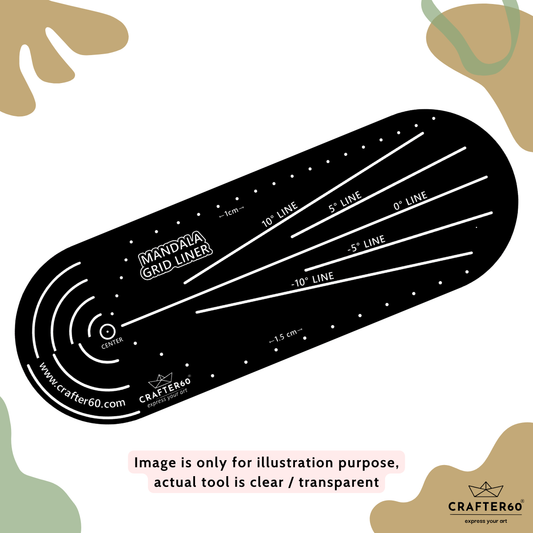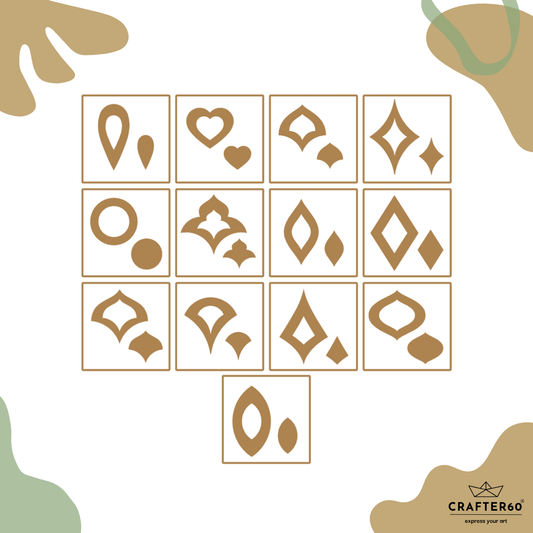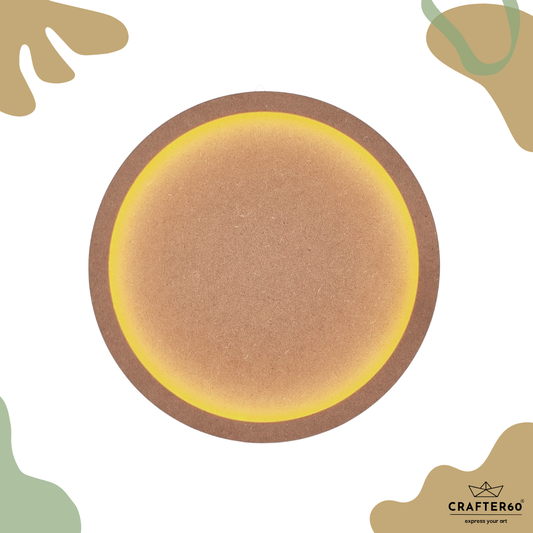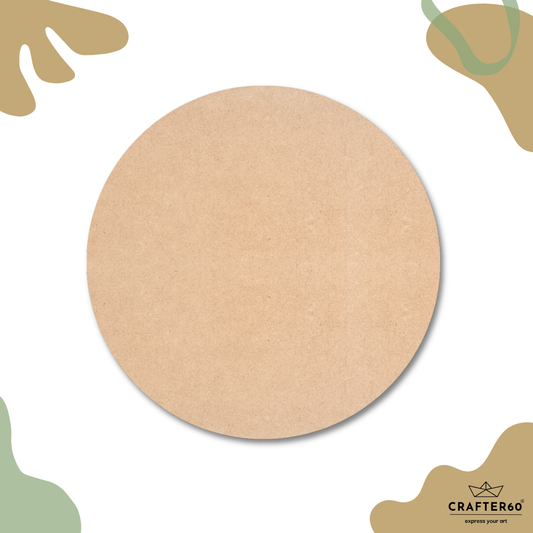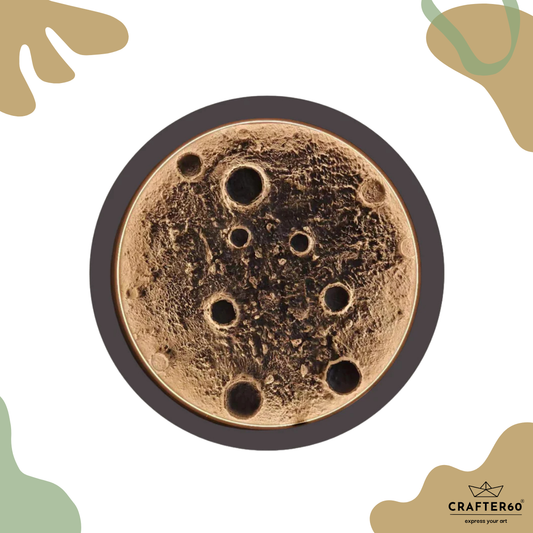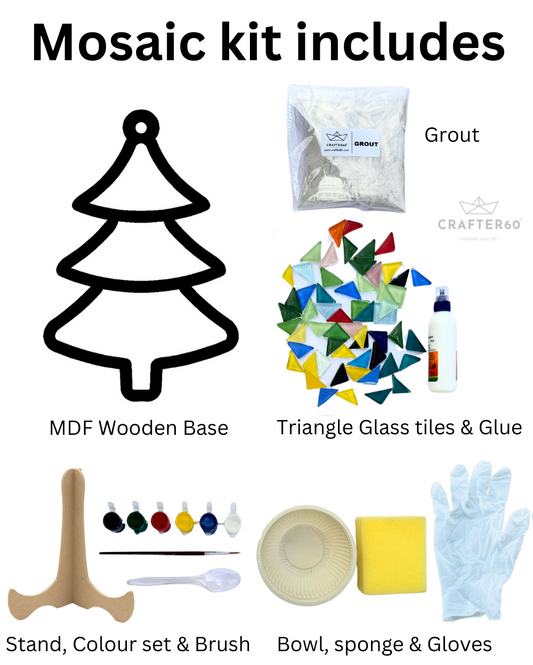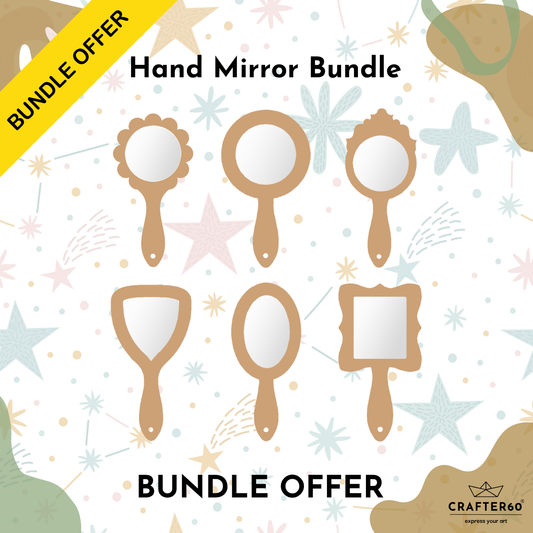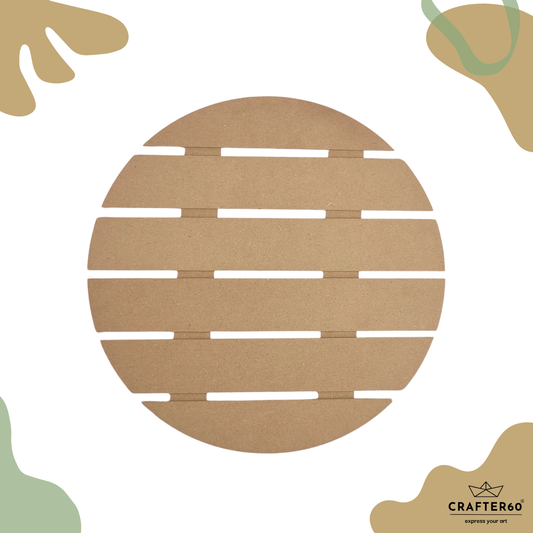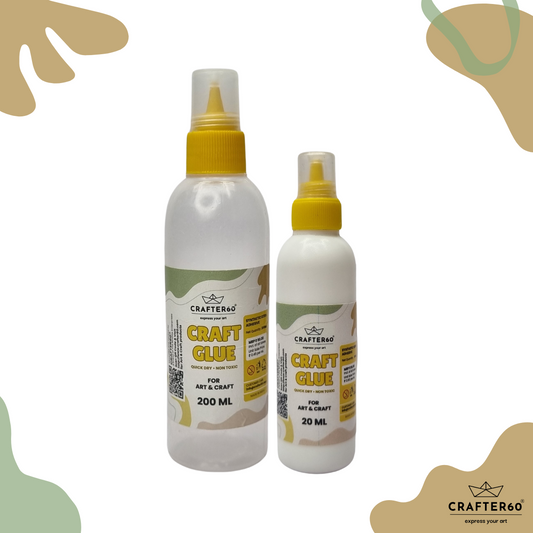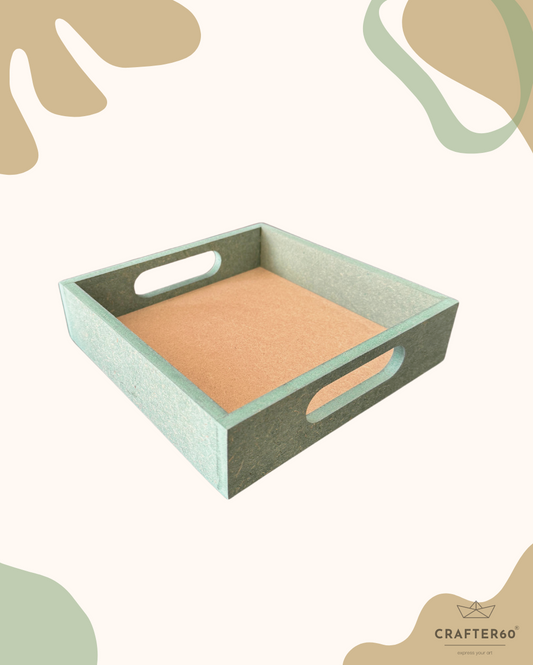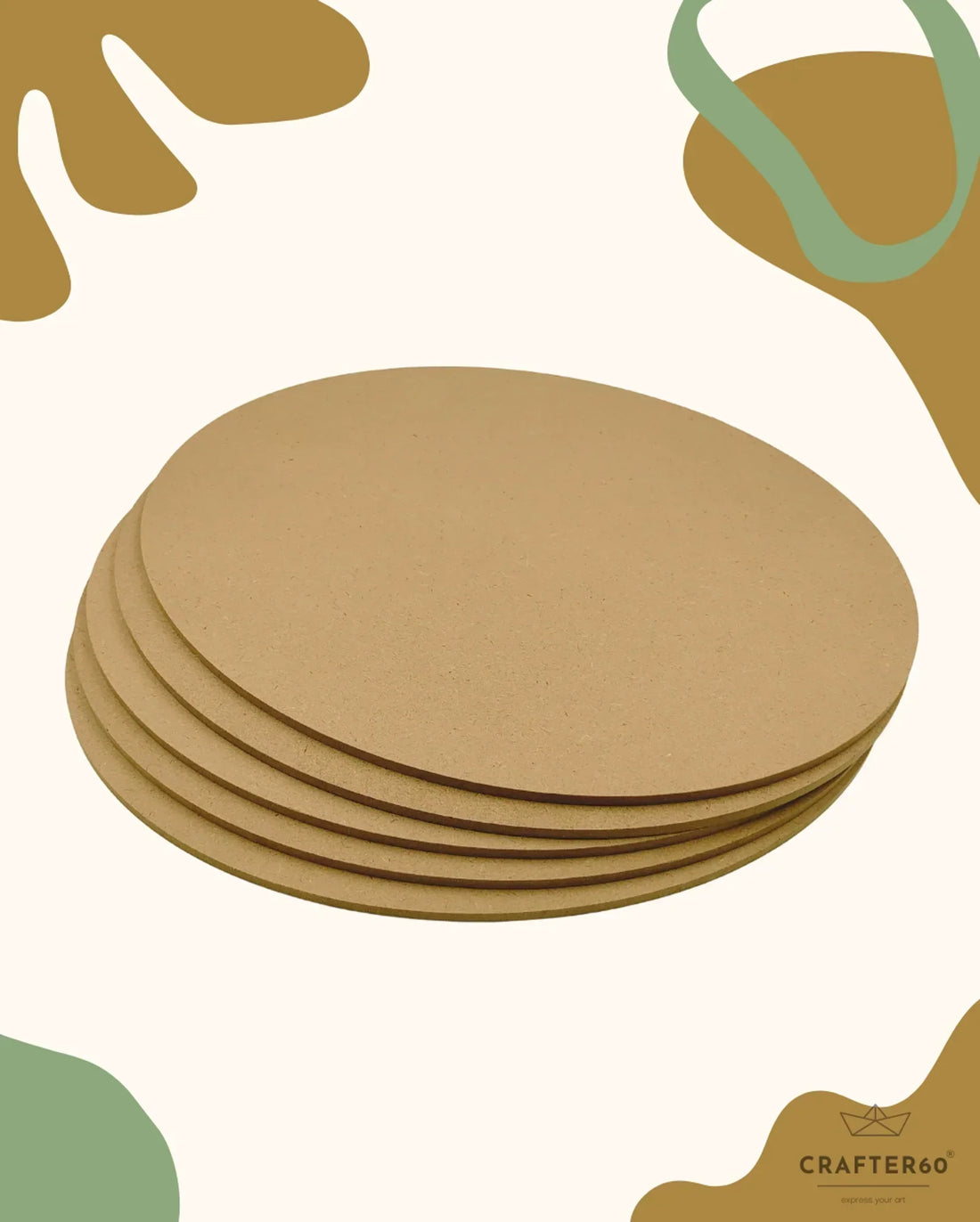
MDF Board for Art: How to Choose the Perfect Base for Your Craft?
Share
Is every MDF board right for your creativity needs? Why do some artworks just feel more polished—cleaner lines, smoother finishes, and a presence that holds up over time? It might not be the paint or the technique—it might just be the board beneath it all.
Medium-Density Fiberboard (MDF) is preferred by artists, crafters, and designers due to its smooth surface, affordability, and versatility. Whether you are painting, engraving, or working with mixed media, selecting the right MDF board helps you achieve high-quality results.
Choosing the perfect MDF for your craft requires consideration of factors such as thickness, density, surface preparation, and finishing techniques. A well-chosen MDF panel can enhance the durability and aesthetic appeal of your artwork. This guide provides a detailed overview of MDF for art, ensuring that you make an informed decision when selecting the best MDF board for your creative projects.
What is MDF and Why is it Ideal for Art?
Understanding MDF Composition
MDF is an engineered wood product created by compressing wood fibers with wax and resin under high pressure. This manufacturing process results in a smooth, uniform, and durable panel that offers several advantages over natural wood and other composite materials. Unlike plywood, MDF does not have visible wood grain, making it an excellent choice for painting, engraving, and crafting.
Benefits of Using MDF for Art and Crafts
MDF offers several advantages that make it an ideal base for artistic projects:
- Smooth Surface: Unlike plywood or natural wood, MDF provides a flawless texture without knots or grain, ensuring even paint application and detailed engravings.
- Cost-Effective: MDF is more affordable than solid wood while still offering excellent quality and durability.
- Versatile and Customizable: The material is easy to cut, shape, engrave, and paint, making it suitable for a wide range of artistic applications.
- Durability and Strength: MDF is highly stable and resists warping and cracking, ensuring that artwork remains intact over time.
Choosing the Right MDF for Your Artistic Needs
MDF Thickness Guide: Selecting the Best Option for Your Project
The thickness of MDF boards plays a crucial role in determining their suitability for various artistic applications. Selecting the appropriate thickness ensures that the board provides the necessary support and durability for your artwork.
|
MDF Thickness |
Best For |
|
3mm (1/8") |
Stencils, decoupage, lightweight wall art, and paper crafts |
|
6mm (1/4") |
Laser cutting, engraving, and small decorative projects |
|
12mm (1/2") |
Painted panels, dot mandala boards, resin art, wood signs, durable artwork, and 3D wall art |
|
18mm+ (3/4") |
Large frames, furniture pieces, and structural craft projects |
For intricate laser cutting or engraving, 6mm MDF offers the best balance between precision and durability. Thicker MDF boards, such as 12mm or 18mm, provide excellent support for painted artwork and woodcraft projects that require more stability.
Standard MDF vs. High-Density MDF: Which One to Choose?
MDF is available in different densities, each suited for specific artistic and crafting needs. Selecting the right type of MDF ensures the best outcome for your project.
|
Type of MDF |
Best For |
Key Features |
|
Standard MDF |
Painting, general crafting |
Affordable, smooth surface |
|
High-Density MDF |
Laser cutting, engraving, furniture |
More durable, sharper engraving quality |
|
Moisture-Resistant (MR MDF) |
Humid environments, outdoor use |
Water-resistant, prevents warping |
|
Fire-Retardant MDF (FR MDF) |
Public art displays, safety-conscious projects |
Fire-resistant coating for added safety |
For projects that involve painting or general crafting, standard MDF is a practical and cost-effective choice. However, if precision engraving or long-term durability is required, high-density MDF provides better structural integrity. In environments with high humidity, moisture-resistant MDF prevents swelling and ensures longevity.
Pre-Primed vs. Raw MDF: Which One is Best?
Selecting between pre-primed MDF and raw MDF depends on the type of finish required and the level of customization needed.
|
Type |
Best For |
Advantages |
|
Pre-Primed MDF |
Painting, quick projects |
Saves time, provides an even surface for painting |
|
Raw MDF |
Custom textures, engraving, mixed media |
Allows full customization, more affordable |
For artists who prefer a ready-to-use surface, pre-primed MDF is a convenient option as it eliminates the need for priming and sanding. For those who require a more customized finish, raw MDF provides flexibility in preparing and finishing the surface according to specific project needs.
How to Prepare MDF for Painting and Crafting
Sanding MDF for a Smooth Finish
While MDF has a naturally smooth surface, light sanding improves paint adhesion and removes any factory residue. Sanding is particularly important when working with raw MDF.
Steps to Sand MDF Properly:
- Use 180-240 grit sandpaper to lightly sand the surface.
- Pay special attention to edges, as they tend to absorb more paint than the flat surface.
- Remove dust using a tack cloth or a damp cloth before proceeding with priming.
Sealing MDF to Prevent Paint Absorption
MDF is highly porous, which can lead to uneven paint absorption. To achieve a professional finish, it is essential to seal the surface and edges before painting.
Best Methods for Sealing MDF:
- PVA Glue & Water Mixture: A budget-friendly option that effectively seals MDF edges.
- Sanding Sealer: A reliable choice for achieving a smooth, even finish.
- Acrylic Gesso or Wood Primer: Ideal for artists using acrylic or oil paints.
Sealing the edges is particularly important, as they tend to absorb moisture and paint more readily than the surface.
Choosing the Right Primer for MDF
Priming MDF before painting enhances durability and ensures that the paint adheres evenly. The choice of primer depends on the type of paint being used.
|
Primer Type |
Best For |
Drying Time |
|
Acrylic Gesso Primer |
Fine art painting |
30 minutes – 1 hour |
|
Oil-Based Primer |
Long-lasting paint jobs |
6-12 hours |
|
Water-Based Primer |
Quick-drying crafts |
1-2 hours |
For acrylic and mixed media artists, acrylic gesso primer is a preferred choice due to its quick-drying properties and ability to create a smooth, paint-ready surface.
Where to Find the Best MDF Without Compromising on Quality?
Finding the right MDF for art can be challenging. Some boards absorb too much paint, others warp over time, and the right thickness is often hard to find. High prices and inconsistent quality make it even more difficult to get a material that truly enhances your craft. So, how do you ensure you’re working with MDF that provides a smooth surface, durability, and precision without overspending?
The answer lies in sourcing MDF that is designed with artists in mind - offering the right balance of quality, variety, and affordability. By choosing MDF that meets high industry standards, you can create with confidence, knowing your material supports your creativity. Whether you need thin sheets for laser engraving or sturdy panels for painting, it’s time to explore better options that help you craft without limitations.
Discover the Best MDF products and showcase your creativity to the world!

